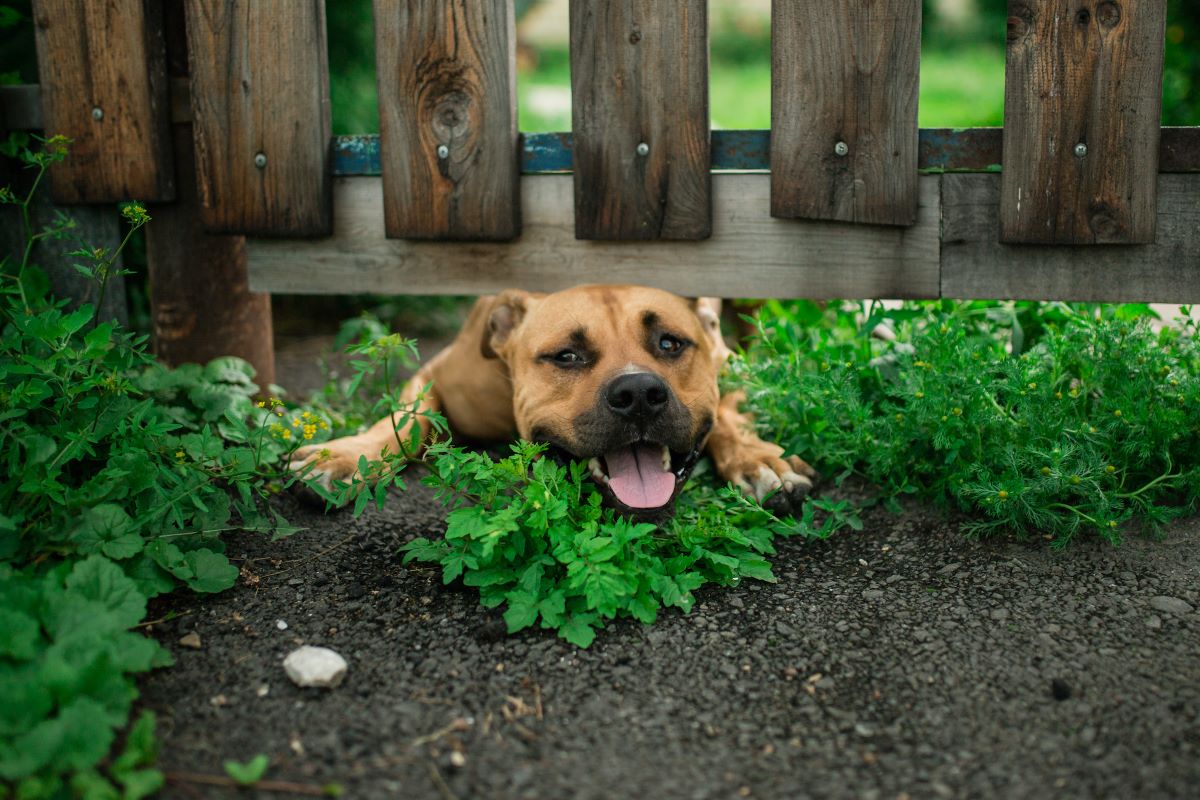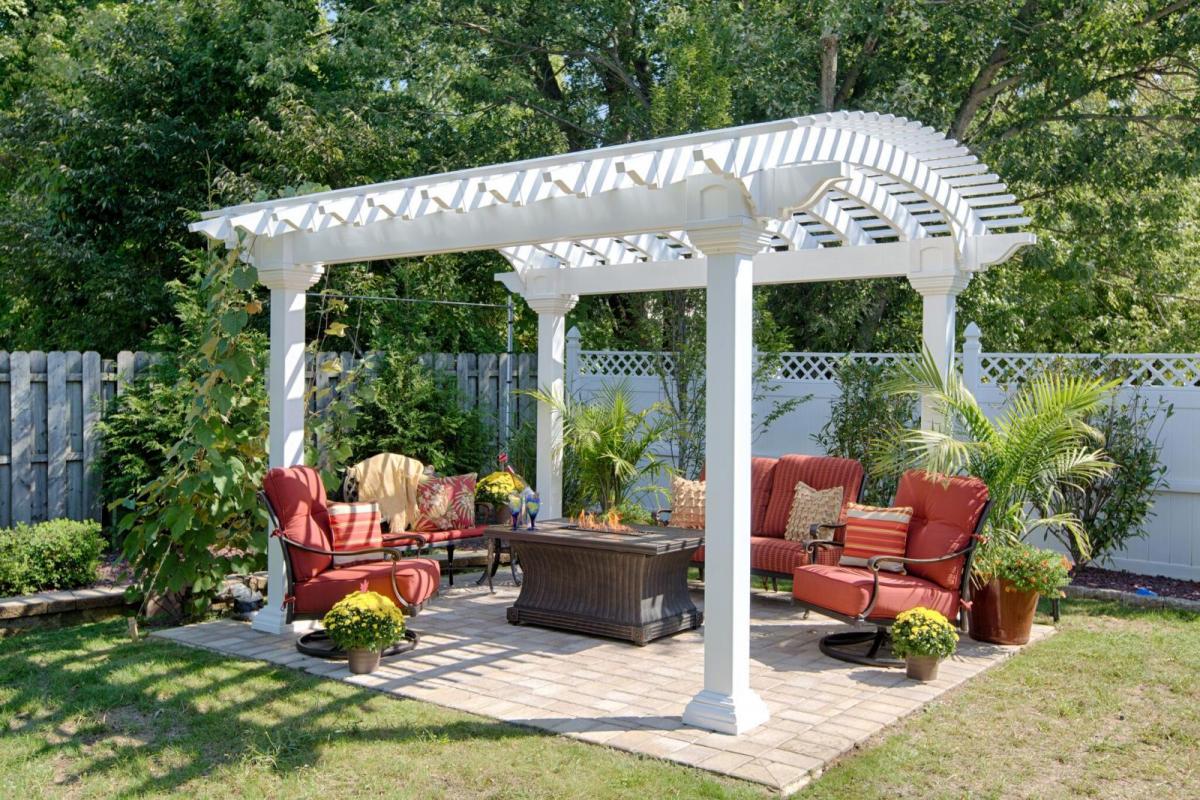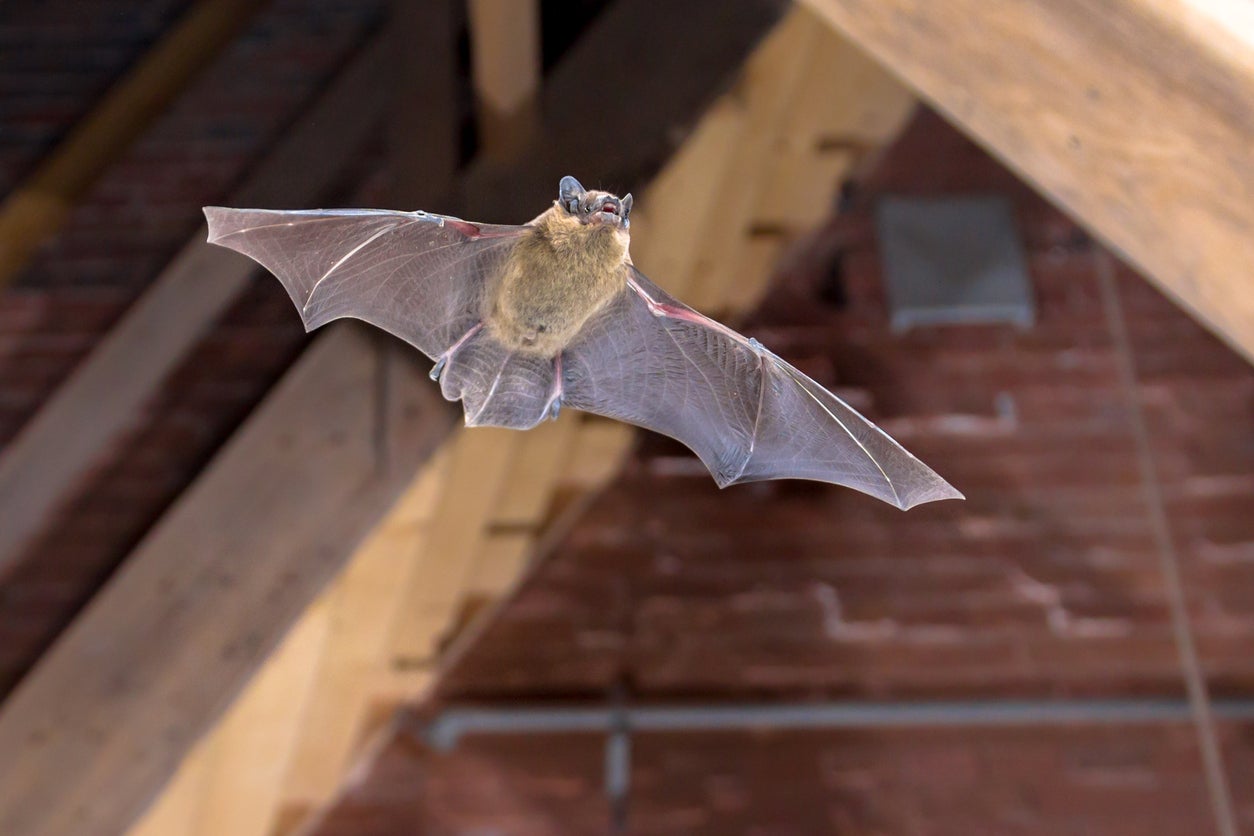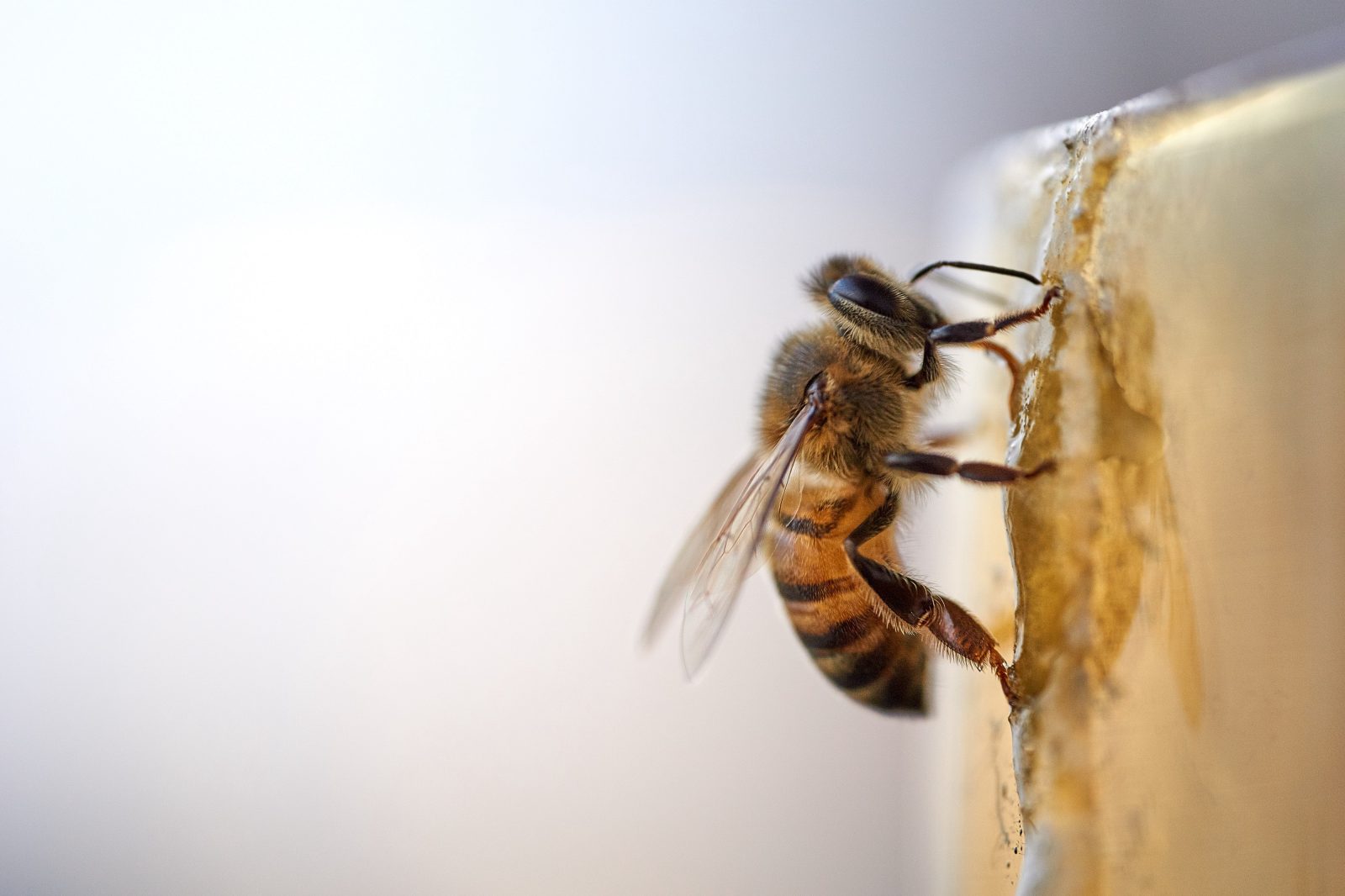

Articles
How To Keep Dog Away From Fence
Modified: February 23, 2024
Learn effective strategies to prevent your dog from getting too close to the fence with our informative articles. Keep your furry friend safe and your garden intact.
(Many of the links in this article redirect to a specific reviewed product. Your purchase of these products through affiliate links helps to generate commission for Storables.com, at no extra cost. Learn more)
Introduction
Welcome to our comprehensive guide on how to keep your dog away from the fence. Many dog owners experience the frustration of their furry friend constantly trying to escape or engage with what’s happening on the other side of the fence. Not only can this behavior be dangerous for your dog, but it can also lead to damage to your property, neighborhood disputes, and even legal issues.
In this article, we will explore various strategies and techniques to help you address this issue. By understanding the underlying causes of your dog’s behavior and implementing effective solutions, you can create a safe and secure environment for both your dog and the surrounding community.
Before proceeding, it’s essential to note that every dog is unique, and what works for one may not work for another. It’s crucial to assess your individual situation and consider factors such as your dog’s breed, age, personality, and training history. Patience, consistency, and positive reinforcement are key elements in successfully modifying your dog’s behavior and preventing fence-related escapades.
Now, let’s delve into the various strategies and techniques you can employ to keep your dog away from the fence.
Key Takeaways:
- Understanding your dog’s motivations and triggers for fence-related behaviors is crucial in developing a tailored plan to prevent escapes. Implementing physical and visual barriers, positive reinforcement training, and mental stimulation can effectively deter fence-related behaviors.
- Seeking professional help is a valuable option if you’re struggling to address your dog’s fence-related behaviors. Professional trainers and behaviorists can provide expert assessment, tailored training programs, and ongoing support to create a safe and harmonious environment for your dog.
Read more: How To Keep Dog From Jumping On Fence
Understanding the Problem
Before we can effectively address the issue of your dog trying to escape or engage with the fence, it’s essential to understand why this behavior occurs. Dogs exhibit fence-related behaviors for a variety of reasons, including boredom, anxiety, curiosity, territorial instincts, or a desire to interact with people, animals, or stimuli outside of the enclosed area.
Boredom: Dogs are intelligent and social animals that require mental and physical stimulation. If they are left alone for extended periods without adequate exercise or mental enrichment activities, they may resort to fence-related behaviors as a means of entertainment or seeking stimulation.
Anxiety: Some dogs may exhibit fence-related behaviors as a result of fear or anxiety. They might feel trapped or threatened by what’s happening outside the fence and attempt to escape or engage with it as a coping mechanism.
Curiosity: Dogs are naturally curious creatures. They may be enticed by interesting sounds, smells, or movements on the other side of the fence, prompting them to investigate further and try to reach what catches their attention.
Territorial Instincts: Dogs have a strong instinct to protect their territory. When they see or hear other animals or people near their enclosed area, they may feel the need to defend their territory by attempting to escape or engage with the fence.
By understanding the underlying motivations behind your dog’s fence-related behavior, you can tailor your approach and select the most appropriate strategies to address the problem effectively.
In the following sections, we will explore various techniques that can help deter your dog from the fence, create physical and visual barriers, implement training methods, and provide mental and physical stimulation to reduce their desire to escape or engage with the fence.
Assessing Your Dog’s Behavior
Before implementing any preventive measures, it’s important to assess your dog’s behavior and understand the specific triggers that prompt them to approach or attempt to escape the fence. By observing your dog’s actions, you can gain valuable insights into their motivations and customize your approach accordingly.
Here are some key factors to consider when assessing your dog’s behavior:
- Frequency and intensity: Take note of how often your dog engages with the fence and the level of intensity they display. Do they approach the fence casually, or do they exhibit obsessive behaviors?
- Triggers: Identify the specific triggers that prompt your dog to interact with the fence. Is it the presence of other animals, people passing by, or certain sounds or stimuli?
- Body language: Pay attention to your dog’s body language when they are near the fence. Are they displaying signs of anxiety, fear, or excitement?
- Escape attempts: Observe the methods your dog uses to try and escape the fence. Do they dig, jump, squeeze through gaps, or chew on the fence?
- Reinforcement: Determine if your dog’s fence-related behavior has been inadvertently reinforced in the past. For example, have they successfully escaped in the past and received attention or rewards for doing so?
By carefully assessing your dog’s behavior, you can gain valuable insights that will help you tailor your training and prevention efforts accordingly. Keep a record of your observations, noting the patterns and triggers you observe. This information will be crucial in the next steps of creating physical and visual barriers, implementing training techniques, and providing mental and physical stimulation for your dog.
Remember, each dog is unique, and understanding their behavior will enable you to implement the most effective strategies to prevent fence-related escapades. Let’s now move on to exploring the various preventive measures you can take to keep your dog away from the fence.
Identifying Triggers
One of the key elements in preventing your dog from approaching or attempting to escape the fence is identifying the specific triggers that prompt their behavior. By understanding what motivates your dog to engage with the fence, you can implement targeted strategies to address those triggers and minimize their desire to escape.
Here are some common triggers to watch out for:
- Presence of other animals: Many dogs become highly reactive when they see or hear other animals near the fence. This can include squirrels, birds, cats, or even other dogs. Keeping an eye on these interactions will help you identify when your dog’s escape attempts are triggered by the presence of other animals.
- People passing by: Dogs are naturally curious about visitors or people passing by your property. They may become excited or protective, leading to fence-related behaviors. Pay attention to when your dog becomes more alert or reactive to individuals passing by your fence.
- Noises and stimuli: Various sounds or stimuli can trigger your dog’s fence-related behavior. This can include car horns, sirens, bicycles, or even children playing nearby. Observe your dog’s reaction and note any particular noises or stimuli that provoke them towards the fence.
- Lack of mental and physical stimulation: Dogs that are not adequately stimulated or engaged may resort to fence-related behaviors out of boredom. If you notice that your dog is not receiving enough mental or physical exercise, it’s essential to address this as part of your prevention strategy.
- Separation anxiety: Some dogs may exhibit fence-related behaviors as a result of separation anxiety. They may become more anxious when they see their owners leaving or perceive a potential threat outside the fence.
By closely observing your dog’s behavior and noting the triggers that prompt them to approach or attempt to escape the fence, you can develop a targeted approach to address those specific stimuli. This can involve desensitization techniques, positive reinforcement, and redirecting their focus to more appropriate activities.
Understanding your dog’s triggers is a crucial step in preventing fence-related escapades. It allows you to develop an effective and tailored plan to discourage their fence-related behavior and create a safe and secure environment for both your dog and the surrounding community.
Creating a Physical Barrier
One of the most effective ways to prevent your dog from approaching or attempting to escape the fence is by creating a physical barrier. This barrier serves as a deterrent, making it more difficult for your dog to access the fence and decreasing their desire to engage with it. Here are some strategies to consider when creating a physical barrier:
- Fencing extensions: If your existing fence is not tall enough, consider adding extensions to increase its height. This will make it harder for your dog to jump over the fence and discourage their escape attempts.
- Burying wire or chicken wire: If your dog is prone to digging under the fence, consider burying wire mesh or chicken wire along the base of the fence. This will create an additional barrier that prevents them from digging their way out.
- Double fencing: Another option is to install a secondary fence, creating a buffer zone between your dog and the primary fence. This can be particularly effective in preventing your dog from approaching or engaging with the main fence.
- Covering gaps and openings: Inspect your fence for any gaps, holes, or openings that your dog could squeeze through or use as an escape route. Patch these areas or use materials such as wood panels or mesh to block access.
- Anti-climbing measures: If your dog is adept at climbing fences, consider adding deterrents such as coyote rollers or angled PVC pipes to the top of the fence. These will make it more challenging for your dog to gain a foothold and climb over the fence.
Remember to assess your specific fence and dog’s behavior to determine which strategies will be most effective. It’s important to continuously monitor the physical barrier and make any necessary adjustments to ensure it remains secure and prevents your dog from approaching or escaping.
Creating a physical barrier not only helps keep your dog safely contained but also reduces the temptation for them to engage with or escape the fence. By implementing these strategies, you can significantly reduce the likelihood of fence-related escapades and create a secure environment for your dog.
Read more: How To Keep A Dog In A Fence
Installing a Visual Barrier
In addition to creating a physical barrier, installing a visual barrier can be an effective strategy to deter your dog from approaching or attempting to escape the fence. A visual barrier creates a visual barrier between your dog and the external stimuli that may be triggering their fence-related behavior. Here are some options to consider:
- Privacy screening: Install privacy screening or slats along your fence to block your dog’s view of the outside. This prevents them from being able to see tempting distractions and reduces their desire to engage with the fence.
- Shrubs and hedges: Planting shrubs, hedges, or other dense vegetation along the fence can provide a natural visual barrier. These greenery acts as a buffer, blocking your dog’s view and discouraging them from approaching or attempting to escape.
- Outdoor curtains: Consider hanging outdoor curtains or a shade cloth along the fence. These curtains not only provide privacy for your dog but also block their view of the outside world, reducing their focus on what’s happening beyond the fence.
- Visual deterrents: Use visual deterrents such as scarecrows, reflective objects, or motion-activated devices near the fence. These can startle your dog and deter them from approaching, diverting their attention away from the fence.
When installing a visual barrier, it’s important to ensure that it is securely fixed to the fence and does not pose any hazards to your dog. Additionally, regularly inspect and maintain the visual barrier to ensure it remains effective and intact.
Remember that while a visual barrier can help deter your dog from approaching or attempting to escape the fence, it is still essential to address the underlying reasons for their behavior. Combine the visual barrier with other preventive strategies, such as training, mental and physical stimulation, and positive reinforcement, for the most effective results.
By installing a visual barrier, you create an environment that reduces your dog’s exposure to external stimuli and decreases their desire to approach or escape the fence. It provides an additional layer of prevention to help keep your dog safely contained.
Install a barrier along the bottom of the fence to prevent digging, provide mental and physical stimulation to reduce boredom, and use positive reinforcement training to redirect attention away from the fence.
Training Your Dog with Positive Reinforcement
Training your dog with positive reinforcement is an essential part of preventing fence-related behaviors. By teaching your dog appropriate behaviors and rewarding them for their good behavior, you can redirect their focus away from the fence and reinforce positive habits. Here are some training techniques to consider:
- Recall training: Teach your dog a strong recall command so that they come to you when called, even when they are near the fence. Use high-value treats and lots of praise when your dog responds to the recall command, reinforcing the association between coming to you and receiving positive rewards.
- Leave it command: Train your dog to respond to the “leave it” command when they show an interest in approaching or engaging with the fence. Use treats and verbal praise to reward them for listening to the command and redirect their focus onto other activities.
- Engagement and enrichment activities: Provide your dog with engaging activities, such as puzzle toys, interactive feeders, or obedience training sessions, to keep them mentally stimulated and distracted from fence-related behaviors. These activities help redirect their energy and focus onto more appropriate outlets.
- Clicker training: Incorporate clicker training into your dog’s routine to reinforce positive behaviors. Pairing the sound of the clicker with treats and praise helps your dog understand when they are doing something right and encourages them to repeat the behavior.
- Desensitization and counter-conditioning: Gradually expose your dog to the triggers that typically prompt fence-related behavior, starting at a distance where they remain calm and rewarded for calm behavior. Gradually decrease the distance over time, always rewarding calm reactions. This helps your dog build positive associations with those triggers and reduces their reactivity.
Consistency, patience, and positive reinforcement are key when training your dog. Every interaction is an opportunity to reinforce positive behavior and redirect your dog’s attention away from the fence. Avoid punishment-based training methods, as these can create fear or anxiety in your dog, potentially exacerbating fence-related behaviors.
It’s important to note that training takes time and may require the help of a professional dog trainer, especially if your dog has deep-rooted behavioral issues. A professional can assess your dog’s specific needs and provide guidance and support in developing an effective training plan.
Through positive reinforcement training, you can help your dog develop appropriate behaviors, strengthen their obedience, and reduce their desire to approach or engage with the fence. This training approach builds a strong bond between you and your dog while creating a safe and secure environment.
Using Deterrents and Repellents
When it comes to preventing your dog from approaching or attempting to escape the fence, using deterrents and repellents can be an effective strategy. These products create an aversive experience or scent that discourages your dog from engaging with the fence. Here are some options to consider:
- Bitter apple spray: Bitter apple spray is a safe and non-toxic deterrent that can be sprayed on the fence or other areas you want to discourage your dog from approaching. The bitter taste is unpleasant for dogs, and they will be less inclined to chew or engage with the treated areas.
- Ultrasonic devices: Ultrasonic devices emit high-frequency sounds that are uncomfortable for dogs but inaudible to humans. These devices can be placed near the fence to deter your dog from approaching or engaging with it. However, it’s important to ensure that the ultrasonic device is within a safe range and does not cause distress to your dog.
- Motion-activated sprinklers: Motion-activated sprinklers detect your dog’s movement near the fence and trigger a spray of water. The sudden water spray startles and deters your dog, teaching them to avoid the area near the fence.
- Noise deterrents: Use noise deterrents such as air horns, shakers, or rattling cans to startle your dog when they approach or attempt to escape the fence. These sudden loud noises can be an effective deterrent, discouraging your dog from engaging further.
- Visual deterrents: Install visual deterrents like flags, scarecrows, or balloons near the fence. These objects create movement and visual stimuli that can startle your dog and make them less inclined to approach or interact with the fence.
It’s important to note that deterrents and repellents should be used in conjunction with other preventive strategies, such as training and creating physical barriers. While they can be effective tools, they should not be relied upon as the sole method of preventing fence-related behaviors.
Always follow the manufacturer’s instructions when using deterrents or repellents, and ensure that they are safe for your dog and the environment. If you have any concerns about the effectiveness or safety of these products, consult with a professional dog trainer or veterinarian for guidance.
Using deterrents and repellents can help create an aversive experience for your dog near the fence, reducing their desire to approach or engage with it. By incorporating these tools into your overall prevention plan, you can reinforce boundaries and encourage your dog to stay away from the fence.
Increasing Exercise and Mental Stimulation
One common reason for fence-related behaviors is a lack of physical exercise and mental stimulation. Dogs that are not sufficiently exercised or mentally stimulated may become bored, restless, and more likely to engage with or attempt to escape the fence. By increasing your dog’s exercise and mental enrichment activities, you can help reduce their desire to escape. Here are some strategies to consider:
- Daily exercise: Ensure that your dog receives regular daily exercise. Engage in activities such as brisk walks, jogging, playing fetch, or participating in dog sports. Physical exercise helps expend energy, reduces boredom, and promotes overall well-being.
- Mental enrichment: Provide your dog with interactive toys, puzzle feeders, or treat-dispensing toys that require mental effort to access rewards. This mental stimulation keeps your dog engaged and prevents boredom, decreasing their motivation to approach or escape the fence.
- Obedience training: Regular obedience training sessions not only improve your dog’s behavior but also provide mental stimulation. Teach your dog new commands, practice existing ones, and engage in obedience games to keep their mind focused and active.
- Scent work: Engage your dog in scent work activities where they use their nose to search for hidden treats or toys. This taps into their natural instincts and provides mental stimulation that can help alleviate boredom and reduce fence-related behaviors.
- Daycare or playdates: Consider enrolling your dog in a dog daycare program or arranging playdates with other friendly and well-socialized dogs. These activities provide not only physical exercise but also social interaction, mental stimulation, and an outlet for your dog’s energy.
It’s important to tailor the exercise and mental stimulation activities to your dog’s breed, age, health, and energy level. Consult with your veterinarian or a professional dog trainer to determine the appropriate amount and type of exercise for your dog.
By increasing your dog’s activity level and providing mental enrichment, you can help alleviate boredom, expend their energy in a positive way, and reduce their desire to approach or escape the fence. A tired and mentally stimulated dog is less likely to engage in problem behaviors and more likely to be content and satisfied.
Read more: How To Keep Dogs In Yard Without Fence
Seeking Professional Help
If you have tried various preventive measures and are still struggling to keep your dog away from the fence, seeking professional help is a wise decision. Professional dog trainers and behaviorists can provide valuable guidance, expertise, and support in addressing fence-related behaviors. Here are some reasons why seeking professional help may be beneficial:
- Expert assessment: A professional can conduct a thorough assessment of your dog’s behavior, including their triggers, motivations, and underlying issues. This assessment helps identify the root cause of the fence-related behaviors and enables the development of a targeted and effective training plan.
- Tailored training program: A professional can design a customized training program based on your dog’s specific needs and behavior. They have the knowledge and experience to implement effective techniques and provide you with step-by-step instructions on how to modify your dog’s behavior successfully.
- Behavior modification techniques: Professionals can employ behavior modification techniques that are specific to your dog’s individual situation. These techniques can include desensitization, counter-conditioning, positive reinforcement, and other proven methods to help your dog overcome their fence-related behaviors.
- Ongoing support: Seeking professional help ensures that you have ongoing support throughout the training process. A professional can monitor your progress, make adjustments as needed, and provide guidance and encouragement when challenges arise.
- Safety and well-being: Professionals prioritize the safety and well-being of both you and your dog. They can ensure that training methods are humane, effective, and considerate of your dog’s individual needs and personality.
When searching for a professional, look for someone who specializes in dog behavior or has experience in addressing fence-related issues. Ask for recommendations from your veterinarian, local dog training organizations, or trusted dog owners in your community.
Remember, seeking professional help does not mean you have failed as a dog owner. On the contrary, it shows your commitment to addressing your dog’s behavioral challenges and creating a harmonious living environment for both you and your furry friend.
By working with a professional, you can gain invaluable insights, learn effective techniques, and receive the support needed to address your dog’s fence-related behaviors successfully.
Conclusion
Keeping your dog away from the fence is an important aspect of responsible pet ownership. Fence-related behaviors can pose risks to your dog’s safety, cause property damage, and lead to neighborhood disputes. However, with the right strategies and techniques, you can prevent these behaviors and create a secure and peaceful environment for both your dog and your community.
In this comprehensive guide, we have explored various methods to keep your dog away from the fence. Understanding the underlying motivations and triggers behind your dog’s behavior is crucial in developing an effective plan of action. Creating physical barriers and installing visual deterrents help discourage your dog from approaching or attempting to escape the fence.
Training your dog with positive reinforcement is a powerful tool in redirecting their focus and reinforcing desirable behaviors. Increasing exercise and mental stimulation is vital to ensure your dog is content and less inclined to engage with the fence out of boredom. Exploring the use of deterrents and repellents can further aid in reinforcing boundaries and discouraging fence-related behaviors.
However, if you find yourself struggling to address the issue, seeking professional help is always a viable option. Professional trainers and behaviorists can provide expert guidance and support, tailoring a training program to suit your dog’s specific needs.
Remember, the key to success lies in consistency, patience, and positive reinforcement. Each dog is unique, and what works for one may not work for another. It’s important to remain flexible and adjust your approach based on your dog’s responses and progress.
By implementing the strategies outlined in this guide and considering professional guidance when necessary, you can create a safe and secure environment for your dog, minimize the risk of fence-related issues, and foster a happy and harmonious relationship with your furry companion.
Frequently Asked Questions about How To Keep Dog Away From Fence
Was this page helpful?
At Storables.com, we guarantee accurate and reliable information. Our content, validated by Expert Board Contributors, is crafted following stringent Editorial Policies. We're committed to providing you with well-researched, expert-backed insights for all your informational needs.














0 thoughts on “How To Keep Dog Away From Fence”